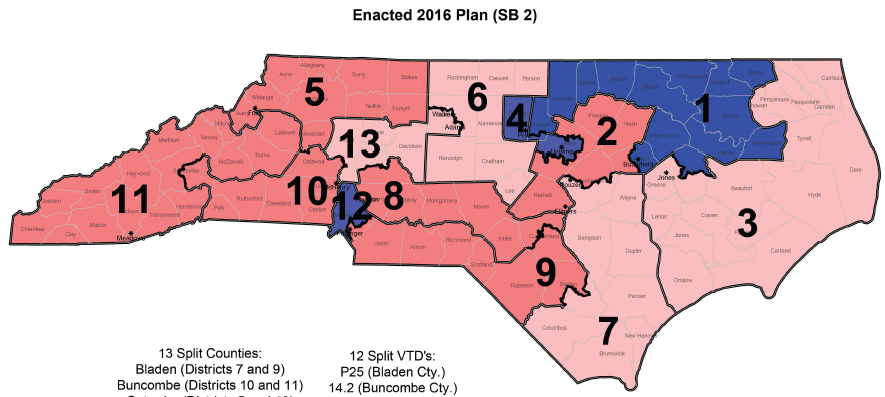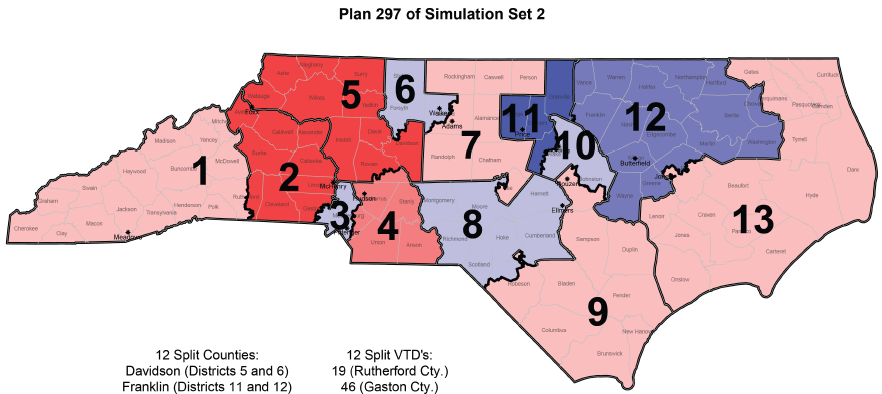As Dan mentioned, the League of Women Voters and Common Cause each filed a brief yesterday explaining how Gill v. Whitford affects the North Carolina partisan gerrymandering case. I wanted to flag the litigants’ subtly different (but complementary) ways of establishing standing. The League, first, identifies a particular alternative map that beats the enacted plan on every nonpartisan criterion and also treats the parties perfectly symmetrically. The League then identifies a series of its members who live in cracked or packed districts in the enacted plan, but who would live in uncracked or unpacked districts in the alternative map. You can see the enacted plan and the particular alternative map below, with all of their districts shaded based on the defendants’ partisan scores.


Common Cause, in contrast, relies on a couple thousand computer-generated maps rather than a single alternative map. It shows that, across this range of maps, most of its plaintiffs are uncracked or unpacked most of the time. The below chart displays the partisan score of each plaintiff’s district under the enacted plan as well as the distribution of partisan scores for the districts in which each plaintiff ends up in the computer-generated maps.

Both of these approaches lead to the same conclusion: Specific people living in specific places have standing to challenge the vast majority of the enacted plan’s districts, because they were unnecessarily cracked or packed. The point stands whether the baseline for comparison is a single alternative map or thousands of them.